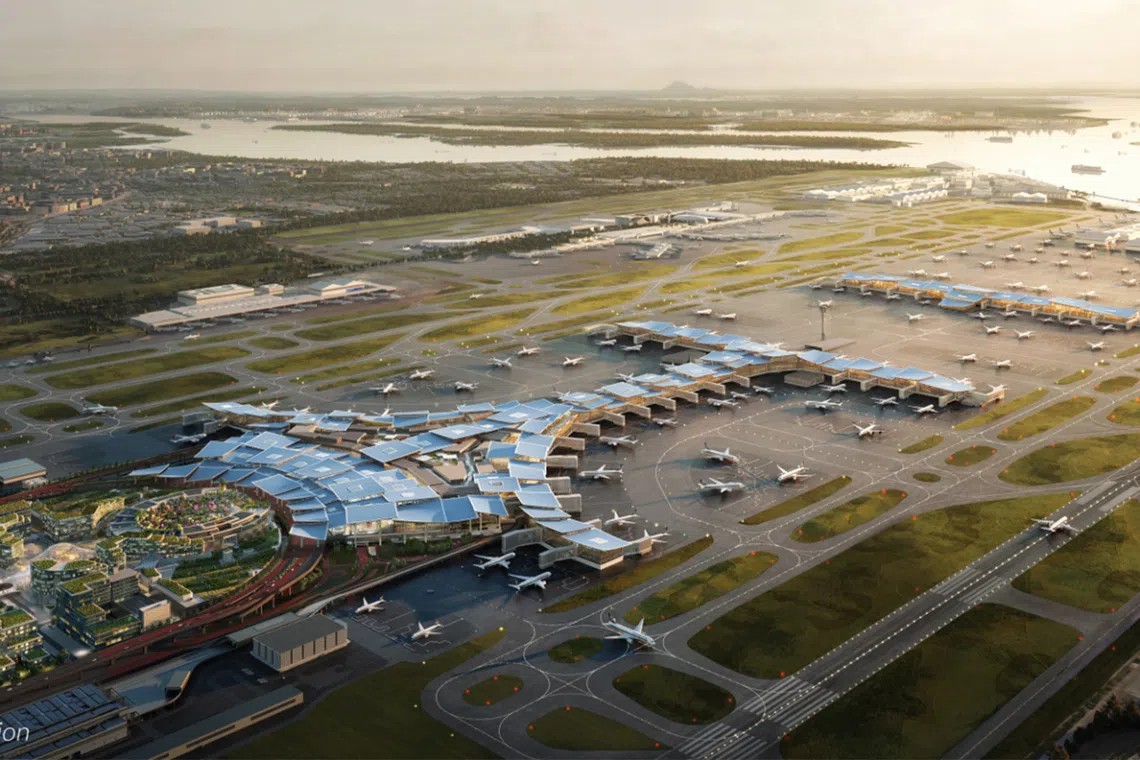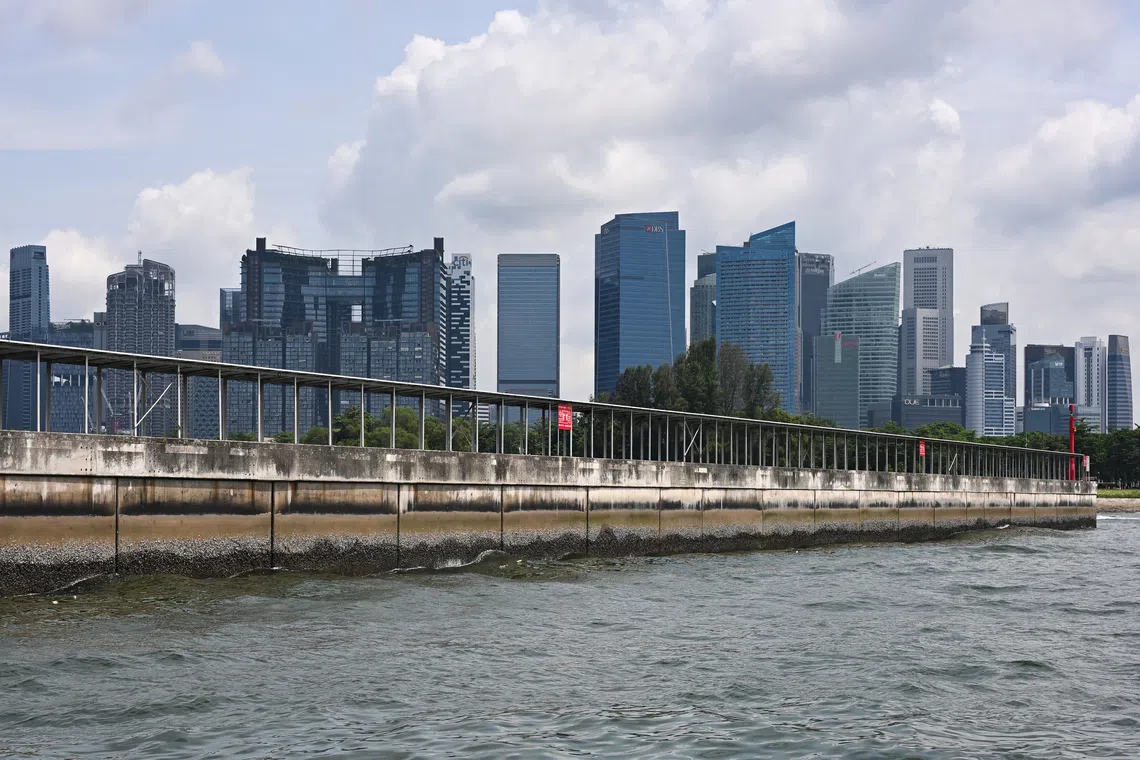Affordable public housing, Singapore’s climate change plan among ministries’ priorities
Sign up now: Get ST's newsletters delivered to your inbox

The improvements will ensure Singapore remains a good place to live and work.
ST PHOTO: BRIAN TEO
Follow topic:
- Public housing will stay affordable through increased BTO supply, income ceiling reviews, and diverse housing options for various demographics.
- Transport improvements include Changi T5, Tuas Port consolidation, RTS Link completion by 2026, and enhanced bus/rail connectivity with autonomous vehicle trials.
- Sustainability plans address rising sea levels, diversify food sources, pursue net-zero emissions by 2050, and invest in water infrastructure.
AI generated
SINGAPORE – Public housing will be kept affordable and the public transport system improved to ensure Singapore remains a good place to live and work.
For example, the next stage of rail expansion in the late 2030s and early 2040s will include the upcoming Jurong Region Line’s West Coast Extension, and the Seletar and Tengah lines.
To address future challenges such as climate change, the Government said on Sept 18 that it is also working on Singapore’s first National Adaptation Plan.
These are part of upcoming plans for the Ministry of National Development, the Transport Ministry and the Ministry of Sustainability and the Environment.
They were released on Sept 18 in the ministries’ addenda to President Tharman Shanmugaratnam’s address at the opening of Parliament.
In his speech on Sept 5, Mr Tharman said that the Government will keep public housing affordable and accessible
Here are the highlights of the various addenda or public statements of each ministry’s plans:
Ministry of National Development (MND)
Public housing will be kept affordable and accessible through a robust supply of Build-To-Order flats across different regions, including more with shorter waiting times, said National Development Minister Chee Hong Tat. His ministry will also maintain a strong supply of land for private housing.
MND will review the income ceiling for public housing and study how to provide more housing options, including for singles, seniors and larger families.
The framework for the
Voluntary Early Redevelopment Scheme (Vers)
will be fleshed out. Vers will allow owners of flats aged 70 years and older to vote on whether the Government should buy back their homes before their leases run out.
MND will advance a pro-enterprise agenda by streamlining regulatory processes through the implementation of CoreNet X, reducing regulatory burden and business costs. CoreNet X streamlines the approval process for construction projects to three stages via a single platform, rather than through multiple agencies.
Ministry of Transport (MOT)
The upcoming
Changi Terminal 5
will bolster air connectivity and reinforce Changi’s position as a global air hub, said Acting Minister for Transport Jeffrey Siow. Air cargo handling capacity will also increase with the new Changi East Industrial Zone and revamped Changi Airfreight Centre. Additionally, MOT will develop the Changi East Urban District, a new lifestyle and business hub located at the doorstep of T5.

The upcoming Changi Terminal 5 will bolster air connectivity and reinforce Changi’s position as a global air hub.
PHOTO: CHANGI AIRPORT GROUP
MOT will consolidate port facilities at Tuas Port, freeing up land in the city centre for urban development and green spaces. When completed in the 2040s, Tuas Port will operate round-the-clock, supported by automation and artificial intelligence.
MOT will continue its work on the
Johor Bahru-Singapore Rapid Transit System (RTS) Link
, with passenger service expected to begin by December 2026. The RTS Link will connect Woodlands North to Bukit Chagar in five minutes, and will serve the Johor-Singapore Special Economic Zone and strengthen economic and people ties between Singapore and Malaysia.
To improve public bus connectivity and meet demand in new towns, MOT will invest nearly $1 billion more in the
Bus Connectivity Enhancement Programme
. This will improve connectivity and shorten public transport journey times for residents living in estates farther from the city. MOT will also expand Singapore’s rail network with new lines and interchanges.
Autonomous vehicles (AVs) will improve first- and last-mile connectivity, and help ease manpower and land constraints for public transport. By end-2025, MOT will pilot fixed-route AV shuttle services in Punggol, and progressively expand this service to more towns, including estates farther from the city centre.
Ministry of Sustainability and the Environment (MSE)
To prepare for rising sea levels, MSE is undertaking site-specific studies across Singapore’s coastline to come up with coastal protection measures, said Minister for Sustainability and the Environment Grace Fu. The ministry will also continue research into coastal protection technologies and solutions, while learning from global industry leaders.

A seawall at Marina South Pier pictured on July 18.
ST PHOTO: LIM YAOHUI
Global food supply chains are increasingly disrupted by disease outbreaks, extreme weather and geopolitical uncertainty. Therefore, MSE will work to enhance Singapore’s food supply resilience. It will diversify food import sources, build up Singapore’s stockpile of essential foods, and help the local agri-food industry scale up and become more productive and climate-resilient.
To achieve net-zero emissions by 2050, MSE will work with international partners to develop the carbon credits market, and carbon capture, utilisation, and storage solutions. This includes conducting carbon capture trials for Singapore’s Waste-to-Energy plants.
MSE will also invest in building Singapore’s capacity to assess the safety of nuclear energy options. As other countries in the region explore the use of nuclear energy, MSE will strengthen regional and international civil nuclear cooperation, and enhance Singapore’s incident response capabilities, including with the International Atomic Energy Agency.
MSE will continue to plan long-term and invest in Singapore’s water infrastructure, as demand for water is expected to almost double by 2065, in line with economic and population growth. It will also work with industry to reduce waste disposal, improve recycling and explore better ways to reuse waste residue.


